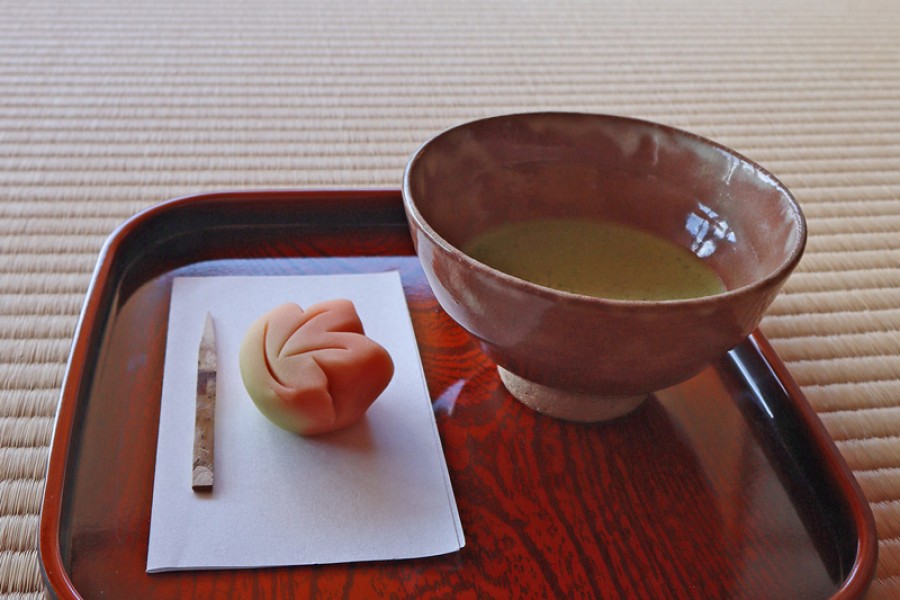
Green Tea Experience at Suirakuen Garden
Try matcha green tea in a traditional tea house in Suirakuen Garden, located inside Nanko Park. Suirakuen Garden is also a popular place to visit for its fall foliage.
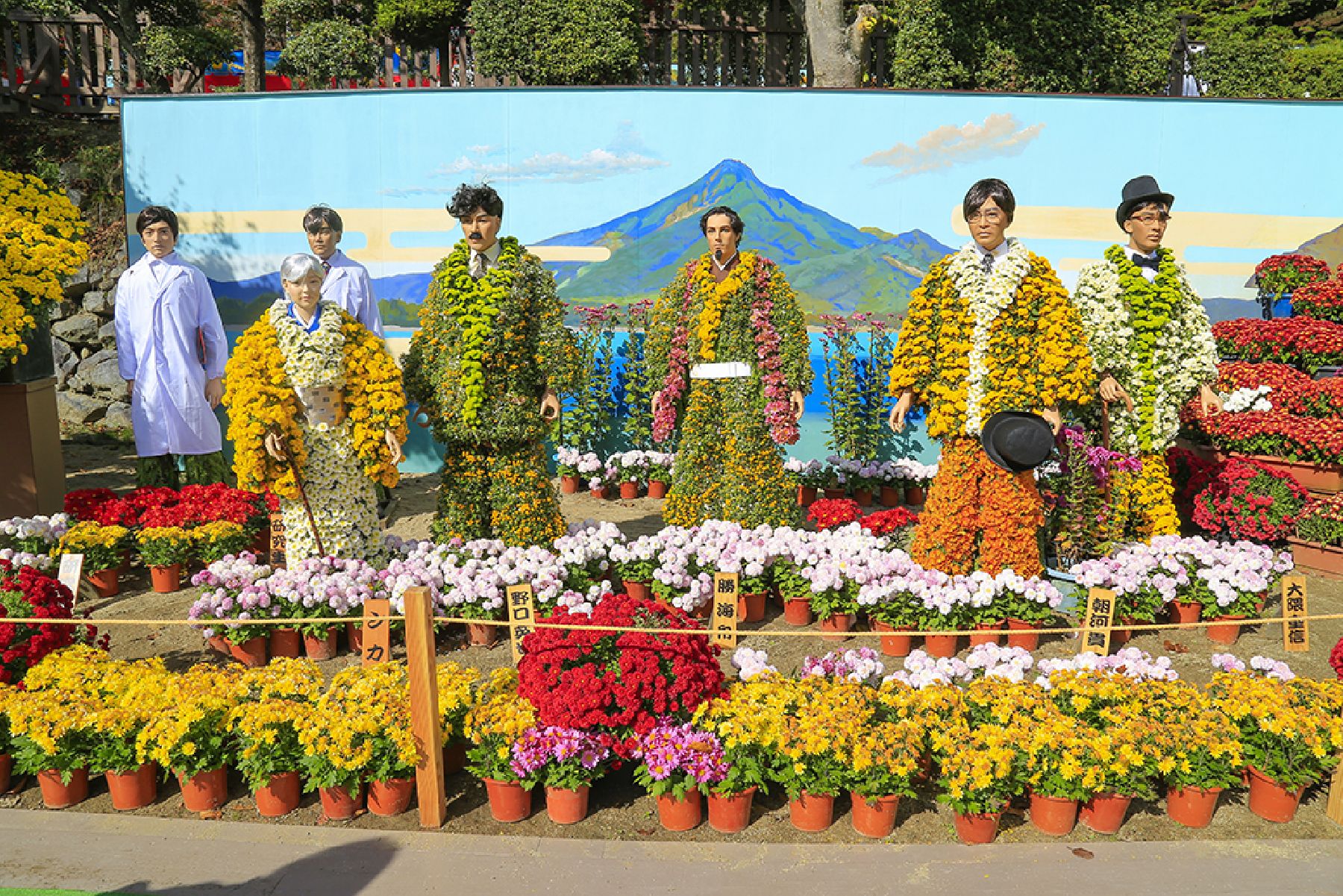
Each year from mid-October to mid-November, an impressive collection of dolls adorned with chrysanthemum flowers (known as ‘kiku ningyo’) are on display at the Kasumigajo Castle Grounds in Nihonmatsu City, for one of Japan’s salient Chrysanthemum festivals. The city prides itself in its cultivation and cherishing of chrysanthemums, the National Flower of Japan. Several places in the city are adorned with chrysanthemums during the festival period.
Kasumigajo Castle, also known as Nihonmatsu Castle, was destroyed during the Boshin War in the 19th century. Visitors can climb up the castle ruins, of which only the walls remain, and enjoy a view of Nihonmatsu City from above. The castle was made into a prefectural natural park and is beautifully preserved, with many cherry blossom trees and flowers in bloom in the spring, as well as stunning foliage in the fall.
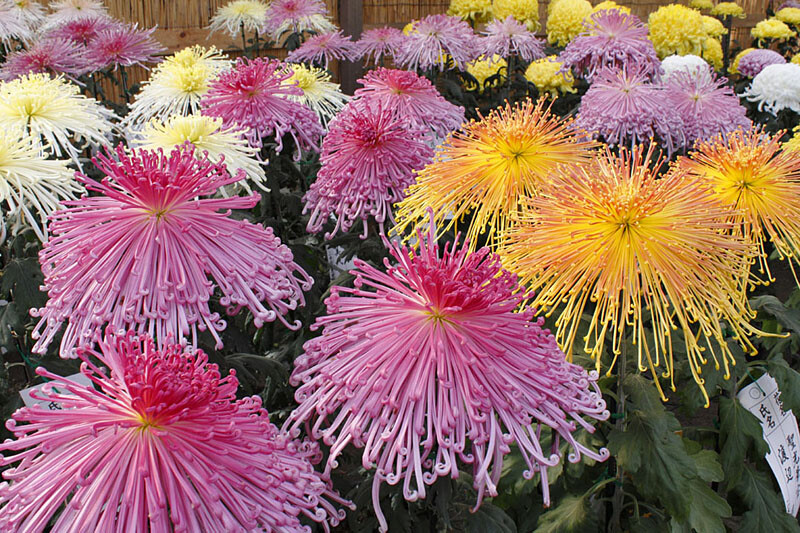
| Website | https://www.city.nihonmatsu.lg.jp/travel_guide/tourist_attractions/page002704.html |
|---|---|
| Contact | Nihonmatsu Tourism Federation |
| Best Season |
|
| Related info | Takes place annually from Mid-October to Mid-November. 2023 Dates: October 10 (Tuesday) to November 19 (Sunday), 2023 |
| Access | Held at Kasumigajo Castle Park (Nihonmatsu Castle) in Nihonmatsu City View directions |
|---|---|
| Getting there | By Car: 5 min from Nihonmatsu I.C. exit off the Tohoku Expressway By Train: 20 min walk from Nihonmatsu Station on the JR Tohoku Main Line
|

Try matcha green tea in a traditional tea house in Suirakuen Garden, located inside Nanko Park. Suirakuen Garden is also a popular place to visit for its fall foliage.

A rural landing field located 10 km Northwest of central Fukushima City. Starting with the Azuma Mountain range, the beautiful mountain vistas surrounding this massive location will leave you mesmerized. In addition to aircraft take-off and landing practice, it is possible to use the Fukushima Sky Park for various events. It is widely used for music events, automobile and motorcycle test drives, and a test venue for public organizations.

Established in 1836, the Yoshinoya family has been continuing the production of Enobori banners using traditional techniques. Originally the family business was a kimono shop, however, the side business of painting Enobori banners began to grow until is eventually became their main business.These banners typically feature images of warriors and can be quite complex with their designs. They are made by painting on banners with a type of calligraphy ink.To create clean and uniform design, stencils are made from various materials to be used as a guide for the design. Once the basic design is painted with a stencil, you connect the lines and add fine details by hand.As a nod to a famous Sukagawa person, they began creating a design of Ultraman posing as a samurai warrior! You can try out the traditional banner making method explained above to create tote bags and small banners featuring a variety of samurai and Ultraman samurai designs.©円谷プロ
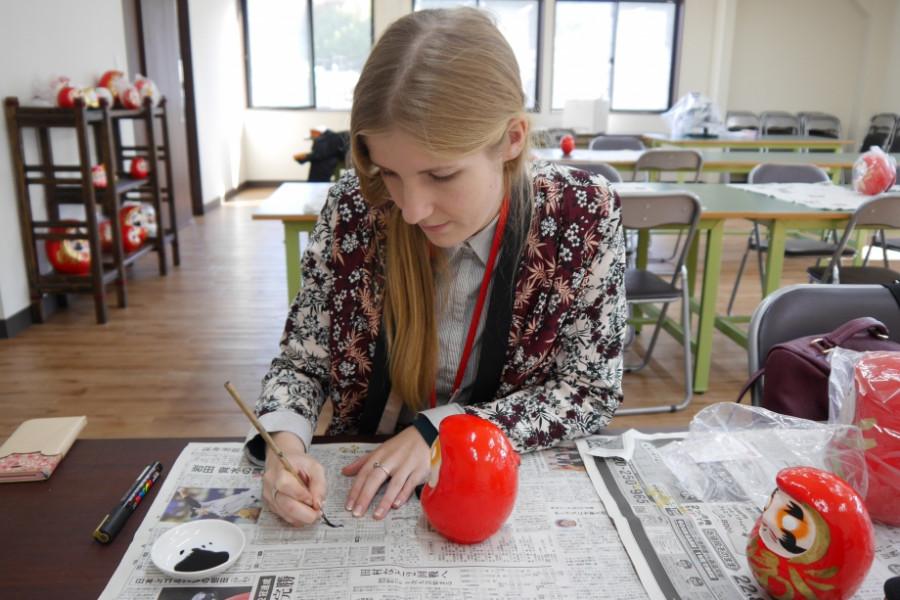
There are records of Shirakawa Daruma (Japanese traditional dolls) being sold as far back as the feudal reign of the Niwa Domain in 1627. Current Shirakawa Daruma are known as “Shirakawa Tsurugame Shochikubai Daruma.” The faces of these dolls are painted to incorporate various animals and plants, with the eyebrows representing cranes, the mustache representing a turtle, the ears representing pines and plum trees, and the beard representing bamboo or pine trees. All of these images are thought to bring good luck. The daruma is known to be a very classical, lucky talisman, started by Matsudaira Sadanobu, the lord of Shirakawa, when he hired the renowned painter Tani Buncho to paint the now famous face on the daruma doll. Once every year a large Shirakawa Daruma Market is held to celebrate and sell the beloved daruma dolls. You can paint your own daruma at the two daruma workshops in town!
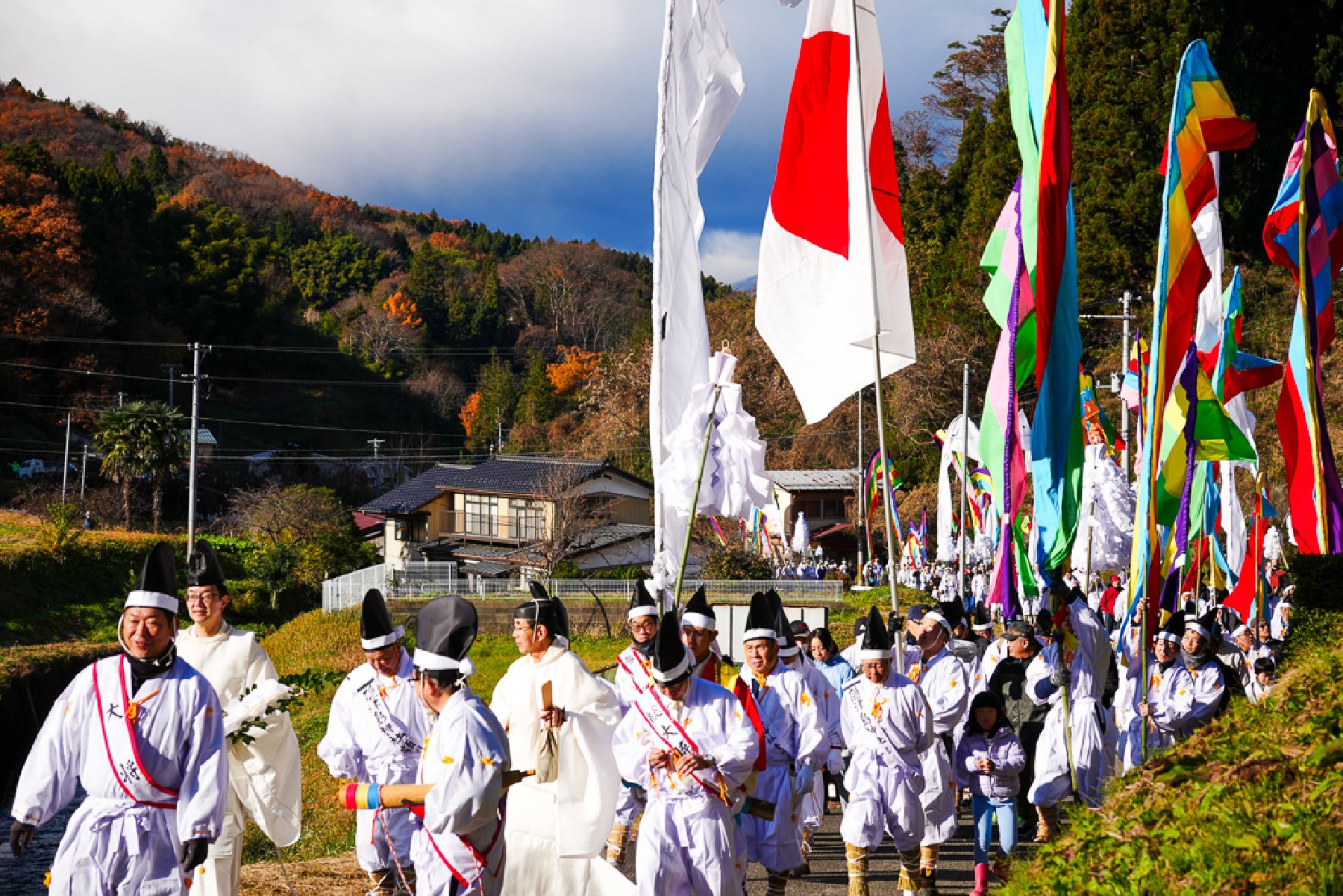
The annual Kohata Hata Matsuri (Kohata Flag Festival) is one of three main festivals in Japan centered on a dramatic procession of large flags, and has been held for over 960 years. The five hues of the brightly-colored flags rising up towards the sky makes for some fantastic views. Kohata Flag Festival, which has been designated as an Important Intangible Folk Cultural Property of Japan, is held annually on the first Sunday of December.Mt. Kohata, for which the Kohata suburb of Nihonmatsu is named, is home to the impressive Okitsushima Shrine. This is where the festival is completed once the attendees have brought the flags up the mountain to make an offering at the shrine complex. The festival route involves wandering through a series of back roads and woodland paths, making it a considerably longer journey than the usual steps that lead to the shrine.The festival typically begins with speeches from local dignitaries at 8am, with the flag procession departing the Kohata Community Center at 8.30am. Accounting for several breaks on the parade route, the flags arrive at Okitsushima Shrine shortly before 1pm in the afternoon, so it's worth bringing food and drink to recharge your energy during the journey. The footing in the woodland can be slippery in early December, so visitors might consider shoes with good grip.
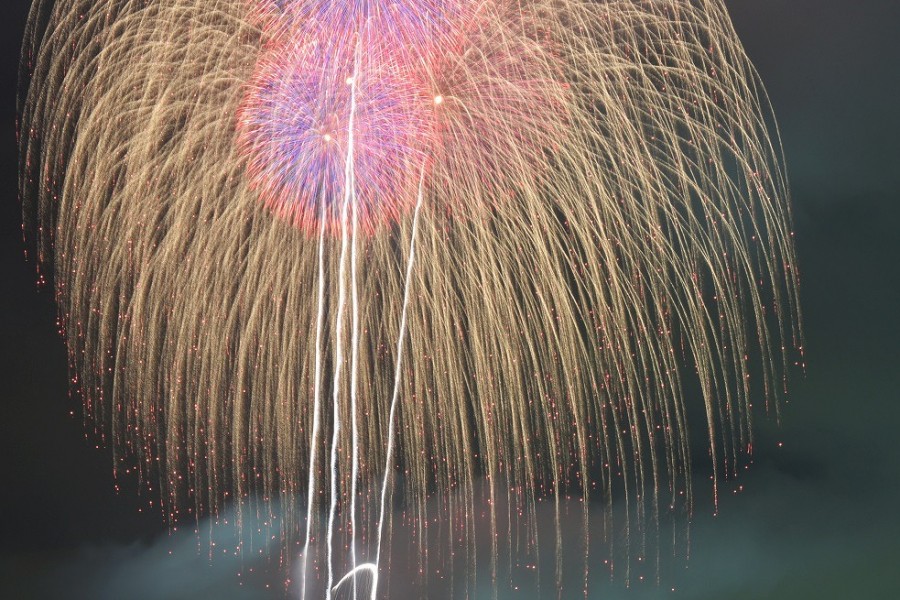
The Fukushima Fireworks Festival is something of a local pride in Fukushima City. Around 8,000 fireworks of a huge variety of explode against the night sky. The firework line-up even includes fireworks that are specifically designed for things such as warding away evil, and granting wishes!

The Ebisu Circuit is a famous car racing track and drifting school in Nihonmatsu. Three times a year, it holds the Ebisu Drift Matsuri (Ebisu Drift Festival), a thrilling event that gathers car drifting fans from across Japan and abroad.The festival usually goes from Saturday morning to Sunday afternoon, during which participants can drift all day and night in the designated courses for a set fee. There are typically three Drift Festivals a year: Spring Drift Festival (ドリフト春祭り): Usually held in April Summer Drift Festival (ドリフト夏祭り): Usually held in August Autumn Drift Festival (ドリフト秋祭り): Usually held in NovemberEbisu Drift Matsuri in 2024 (planned): Spring: April 13th & 14th Summer: August 10th & 11th Autumn: November 16th & 17thParticipating in the Drift Festival is a perfect opportunity to get the most out of a visit to the Ebisu Circuit. For instance, using the racing courses at the Circuit would normally require a reservation, but, during the event, participants are free to use the course of their liking between the available options. Because of that, cars run right next to each other, making the already exciting prospect of drifting even more adrenaline-packed!To participate, you can register at the website before the event. Even if you cannot drive, you can make your way there to watch the incredible maneuvers of drifters as they screech their way through the courses. A big allure of the festival is the atmosphere of being among drivers and car enthusiasts.The information in this post is accurate as of 2023 but could change. For updated information, please refer to the official site of the Ebisu Circuit (in Japanese).

One of the largest scale events in the prefecture, this fireworks show features stunning firework displays, a hanabi-e-maki performance which combines music and fireworks, and displays from firework masters throughout Japan. Around 10,000 fireworks can be enjoyed during this 1.5 hour event.